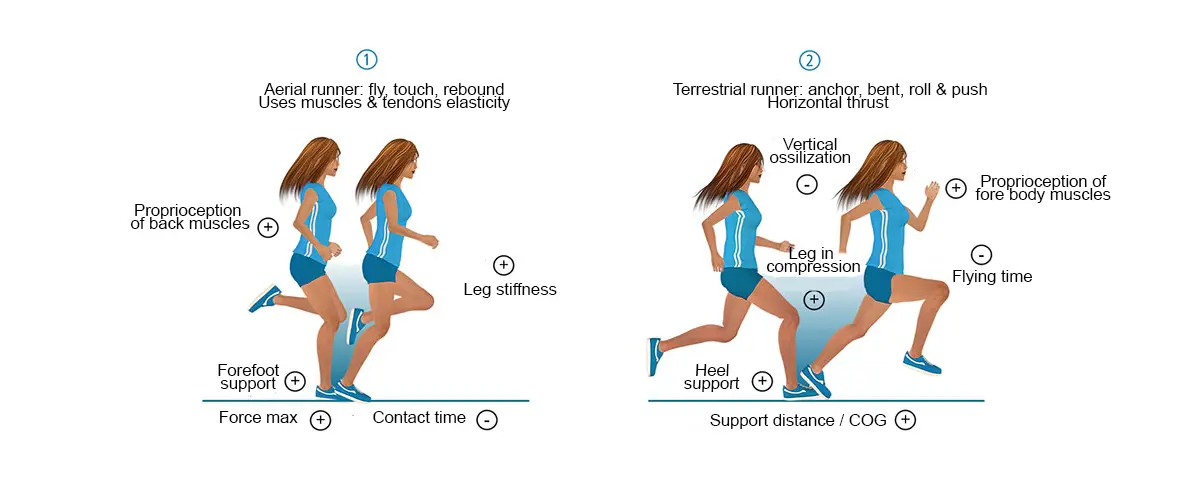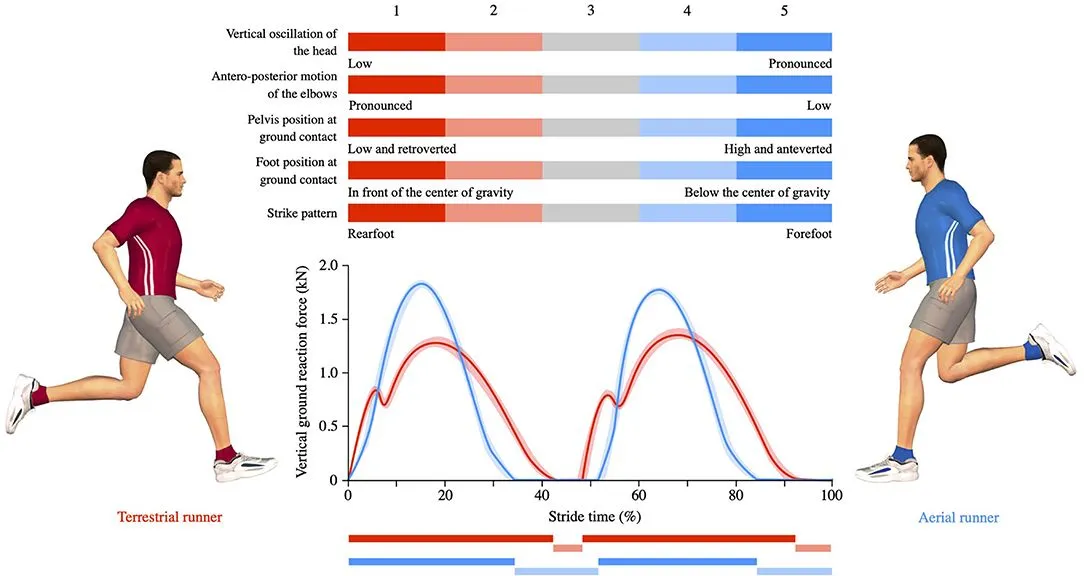AERIAL OR TERRESTRIAL... & BEYOND !
 You may think there is a right way to run? We hear that we should
favour the forefoot and a high step frequency to prevent injuries. This
is not true. There are just as many scientific publications that
advocate a heel pose for running economy and reduced weight bearing
(Lussiana 2016). In other words, there are many good ways to run. More
accurately, some strides fit your nature, while others are not for you.
You may think there is a right way to run? We hear that we should
favour the forefoot and a high step frequency to prevent injuries. This
is not true. There are just as many scientific publications that
advocate a heel pose for running economy and reduced weight bearing
(Lussiana 2016). In other words, there are many good ways to run. More
accurately, some strides fit your nature, while others are not for you.
The type of stride depends on whether the person prefers to place the center of gravity of the body segment forward or backward of the "trunk-head-arm" axis. In "bottom walking", the movement starts from the ground. The person makes a push that moves the pelvis forward. The leg extends forward and towards a new anchor point that allows the movement to be respected. The muscles perform a concentric contraction. Remaining backwards, the upper body follows the movement initiated by the lower body. On the contrary, in the "walk from above", an imbalance is created from the upper body. The shoulders go into a forward fall while the lower limb catches up with the weight coming from above. The body faces a general compression (spring model) that is to say a stretching of its elastics. The person who walks and runs from above uses primarily the elasticity of the muscles. He stays in the air longer. This is why we call it AERIAL. On the other hand, the one who pushes more than he bounces, stays longer on the ground. We call it TERRESTRIAL.
Two efficient strides
At typical pack running speeds (10-12 km/h), the two strides are equally efficient (Lussiana and all 2017). Aerials expend energy against gravity, then recover some of it in their tendons. Terrestrials expend less energy upward and therefore recover less of it in their bodies. They favor the advancement of the pelvis on the support rather than the elevation of the center of gravity.
However, what applies to the stride applies to all other gestures and postures of the person. For example, the way we pick up an object is directly correlated to the mechanical parameters of our stride. Amazing, isn't it?
Standing tall on our two legs, we must maintain our balance. How do we meet this need? Those who place their weight backwards must have efficient muscles in the front of their body to avoid falling backwards. Conversely, those who place their weight forward must have efficient muscles in the back of their body. The stride is directly related to the activation of these more anterior (ground) or posterior (air) muscles. Of course, we can run in different ways, but depending on our natural muscle activation, we are more efficient in one type of stride than another. In other words, there is no one right way to run. There is a stride that best suits who we are. When we run, our whole being is expressed. Even the pleasure we feel differs depending on our natural movements (Lussiana, Gindre, 2016). Our morphology, the choice of our training (duration/speed ratio) and our shoes, as well as the genesis of our injuries could also be influenced by our natural way of moving.
We run the way we are
We are born to move. Our nervous system is shaped to optimize our movements. The stride is just one example of the motor patterns that characterize us since birth. Efficient, we move as we are. We are the product of an intrinsic intelligence of the body and it is important to respect it. The truth of the gesture does not exist. You are the new truth !
Translation of an article displayed on blog.salonreeduca.com/etes-vous-un-coureur-terrien-ou-aerien/ Written by Cyrille Gindre on August 29th 2018.
